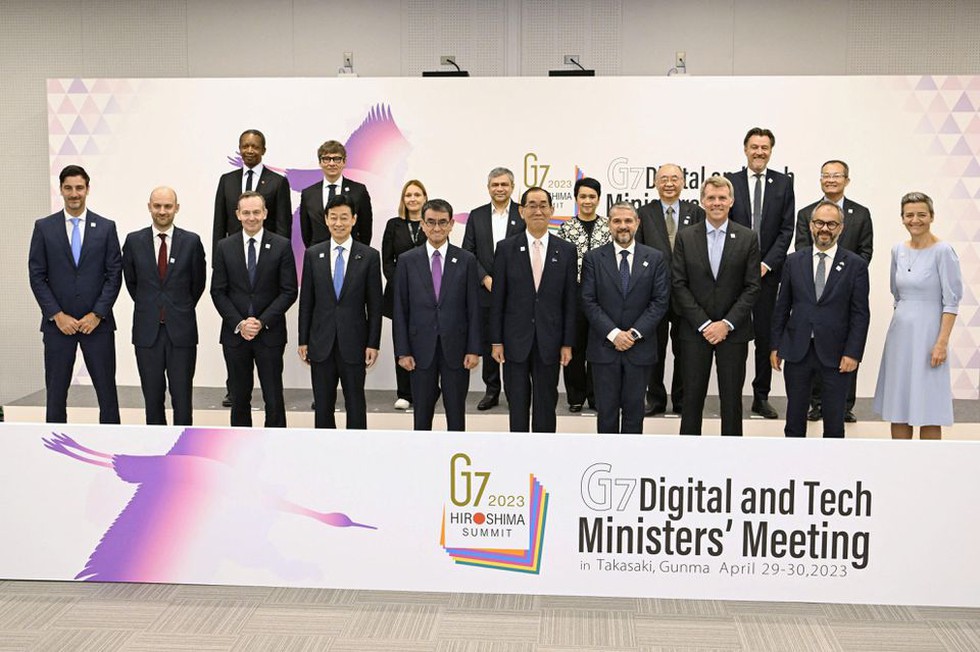
About:
- The G-7 or ‘Group of Seven’ are Canada, France, Germany, Italy, Japan, the United Kingdom, and the United States.
- The G-7 nations meet at annual summits that are presided over by leaders of member countries on a rotational basis. The summit is an informal gathering that lasts two days, in which leaders of member countries discuss a wide range of global issues.
- The G-7 does not have a formal constitution or a fixed headquarters.
- The decisions taken by leaders during annual summits are non-binding.
Timeline:
- It is an intergovernmental organisation that was formed in 1975 by the top economies of the time as an informal forum to discuss pressing world issues.
- Canada joined the group in 1976, and the European Union began attending in 1977.
- The G-7 was known as the ‘G-8’ for several years after the original seven were joined by Russia in 1997. The Group returned to being called G-7 after Russia was expelled as a member in 2014 following the latter’s annexation of the Crimea region of Ukraine.
2. Kashi Telugu Sangamam - Ganga Pushkara Aradhana
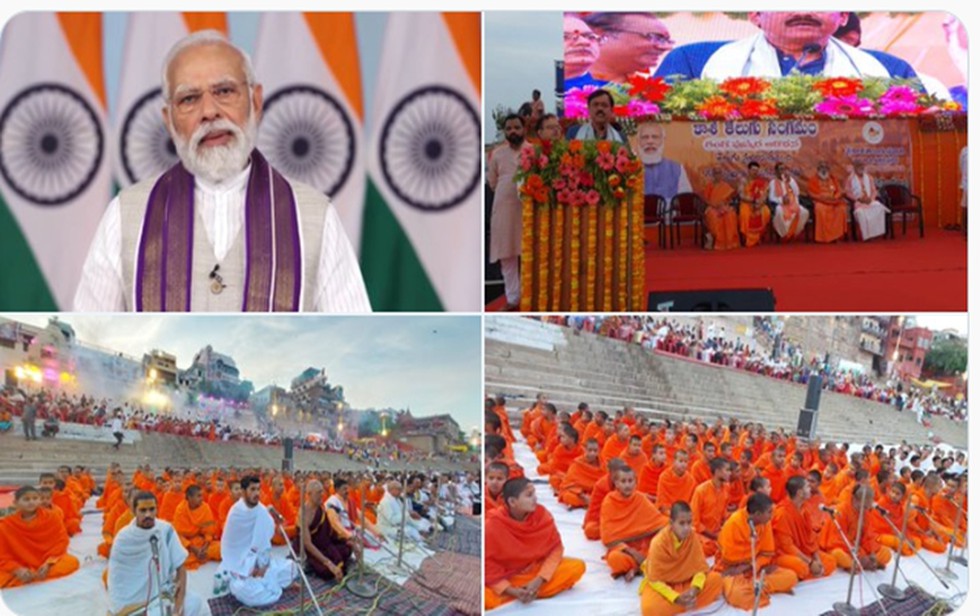
About:
- The Prime Minister said, the Kashi Telugu Sangamam is the confluence of India’s ancient civilization, culture and traditions.
- He highlighted the age-old relations between Kashi and Telugu land.
- He also remembered prominent saints of Andhra Pradesh and Telangana on the occasion.
- The Prime Minister mentioned Tailang Swami who was born in Vizianagaram but was called the living Shiva of Kashi by Swami Ramakrishna Paramhans.
- The Prime Minister mentioned the Kashi Khandamu Granth by Srinath Mahakavi, the Kashi Yatra character of Engul Viraswamayya and the popular Kashi Majili Kathalu.
- The Prime Minister said, the centuries-old relation between Kashi and Telugu people is the reflection of Ek Bharat-Shreshtha Bharat.
- The 12-day-long Kashi Telugu Sangam began in Varanasi on the 22nd of this month and will go on till the 3rd of May.
- The festival is celebrated every 12 years.
3. Yuva Tourism Clubs

About:
- The Ministry has constituted 30 thousand Yuva Tourism Clubs till May 1, 2023 to nurture and develop young ambassadors of Indian tourism.
- Vision: The vision is to nurture and develop young ambassadors of Indian tourism who would become aware of tourism possibilities in India, appreciate our rich cultural heritage and develop an interest and passion for tourism.
- These young ambassadors will be catalysts for promoting tourism in the country.
- The establishment of Yuva Tourism Clubs was initiated in schools, colleges and Indian Hotel Management institutions in connection with the Azadi Ka Amrut Mahotsav celebrations.
- The Ministry of Tourism has also proposed to increase the number of Yuva Tourism Clubs to 50 thousand in the next 100 days, starting from May 1, 2023.
- Participation in Tourism Clubs is also expected to facilitate development of soft skills like teamwork, management, leadership besides encouraging adoption of responsible tourism practices and concern for sustainable tourism.
4. Yellow Fever
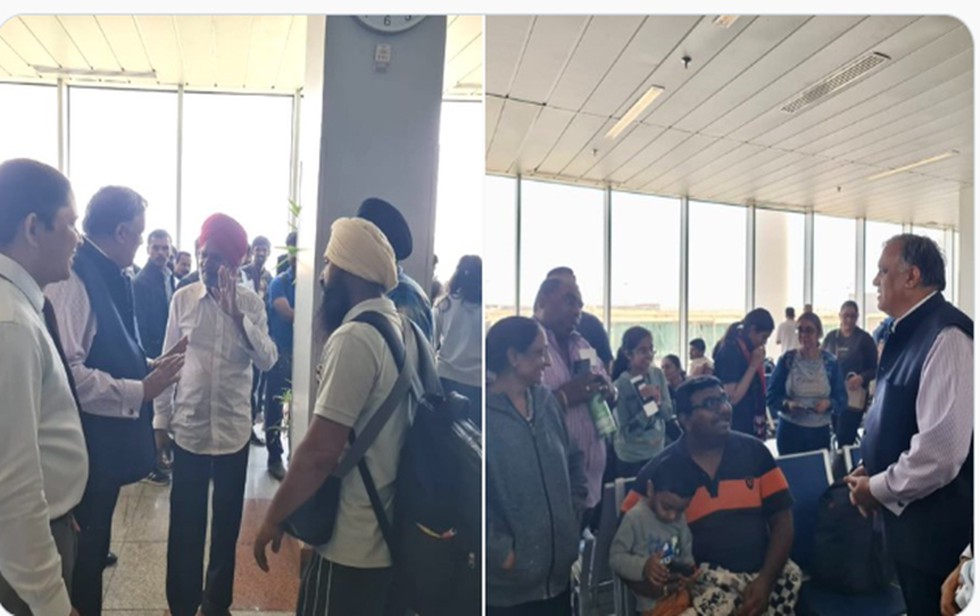
About:
- Nomenclature: Yellow fever is often associated with jaundice, hence the name yellow.
- Endemic countries: to WHO, Yellow fever occurs in 47 endemic countries in Africa in Central and South America. Around 90% of cases reported every year occur in Sub-Saharan Africa.
- Transmission:
- The yellow fever virus is transmitted by infected mosquitoes, most commonly from the Aedes species – the same mosquito that spreads the Zika, Chikungunya and Dengue virus. Haemogogus mosquitoes also spread it and are mostly found in the jungle.
- The disease cannot be spread by contact from one person to another.
- Symptoms:
- Once contracted, the yellow fever virus incubates in the body for 3 to 6 days. Symptoms usually present themselves in 2 phases.
- The first, "acute", phase usually causes fever, muscle pain or vomiting. Most patients improve and their symptoms disappear after 3 to 4 days.
- However, a small percentage of people enter a second, more toxic phase within 24 hours of the initial remission. They will experience high fever, JAUNDICE, and abdominal pain with vomiting and deteriorating kidney function.
- Prevention and Treatment:
- Yellow fever can be prevented by a vaccine that is protective for life. As single dose of yellow fever vaccine, known as 17D, provides life-long immunity against the disease.
- There is no specific treatment for yellow fever but good supportive treatment of symptoms, such as dehydration, fever and infection, improves survival rates. Associated bacterial infections can be treated with antibiotics.
5. London Science Museum
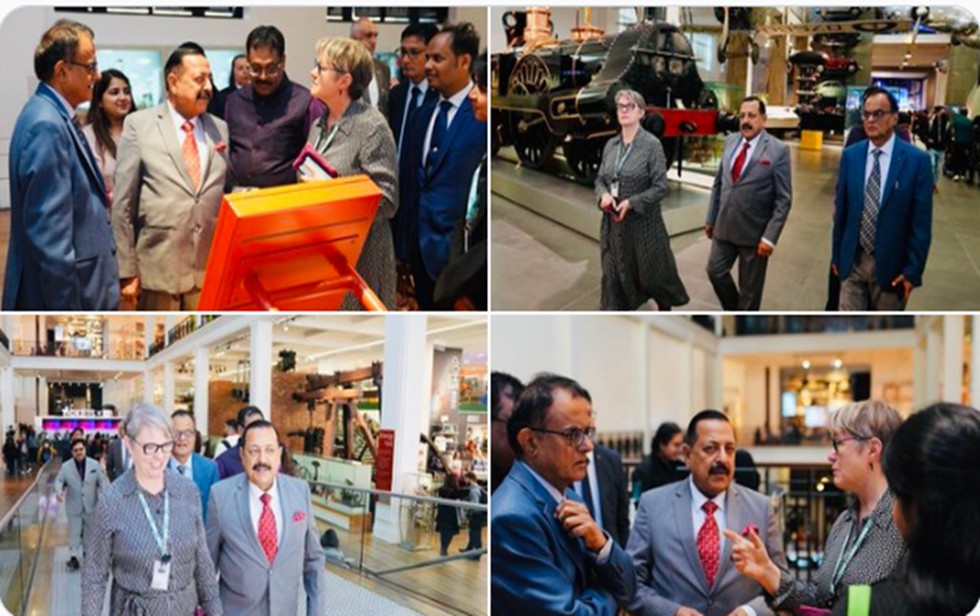
About London Science Museum:
- The Science Museum is a major museum on Exhibition Road in South Kensington, London.
- It was founded in 1857.
- It covered both science and art, and it was not until 1909 that the two sections were formally separated; the arts section went on to form the core of the Victoria and Albert Museum.
- The Science Museum’s displays are concerned with the presentation of science and its application to industry and everyday life, both historically and from a contemporary viewpoint.
- Thus, it is possible to see key engines in the development of motive power or exhibits on the great medical advances made over time (the latter drawn from the museum’s extensive Wellcome collection).
- Petroleum refining, time measurement, the development of computing, space exploration, the extraction and distribution of natural gas, the manufacture of iron and steel, and the development of aircraft are some of the subjects interpreted through the museum’s exhibits.
6. What is Bluebugging?

About Bluebugging:
- What is it? It is a form of hacking that lets attackers access a device through its discoverable Bluetooth connection.
- Once a device or phone is bluebugged, a hacker can listen to the calls, read and send messages and steal and modify contacts.
- It started out as a threat for laptops with Bluetooth capability. Later hackers used the technique to target mobile phones and other devices.
- This attack is often limited due to the range of Bluetooth connections, which goes up to only 10 meters.
- Process:
- Bluebugging attacks work by exploiting Bluetooth-enabled devices.
- The device’s Bluetooth must be in discoverable mode, which is the default setting on most devices.
- The hacker then tries to pair with the device via Bluetooth.
- Once a connection is established, hackers can use brute force attacks to bypass authentication.
- They can install malware in the compromised device to gain unauthorised access to it.
What is a Malware?
- Malware, or malicious software, is any program or file that is intentionally harmful to a computer, network or server.
- Types of malware include computer viruses, worms, Trojan horses, ransomwareand spyware.
- These malicious programs steal, encrypt and delete sensitive data; alter or hijack core computing functionsand monitor end users' computer activity.

About Insurance Regulatory and Development Authority of India (IRDAI):
- It is an autonomous and statutory body established under the IRDA Act 1999.
- It is the apex body that supervises and regulates the insurance sector in India.
- Objective: To protect the interests of policyholders, to regulate, promote and ensure orderly growth of the insurance industry in India.
- Nodal Ministry: Ministry of Finance
- Head Office: Hyderabad.
- Composition: IRDAI is a 10-member body- a Chairman, five full-time members, and four part-time members appointed by the Government of India.
- Functions:
- Fair regulation of the insurance industry while ensuring the financial soundness of the applicable laws and regulations;
- Frame regulations periodically so that there is no ambiguity in the insurance industry;
- Registering and regulating insurance companies;
- Protecting policyholders' interests;
- Licensing and establishing norms for insurance intermediaries;
- Promoting professional organizations in insurance;
- Regulating and overseeing premium rates and terms of non-life insurance covers;
- Specifying financial reporting norms of insurance companies;
- Regulating investment of policyholders' funds by insurance companies;
- Ensuring the maintenance of solvency margin by insurance companies;
- Ensuring insurance coverage in rural areas and of vulnerable sections of society;
8. International Labour Day

About International Labour Day:
- It is celebrated every year on 1 May to commemorate the struggles and sacrifices of the workers' and labours' movement.
- It is also known as May Day.
- It is celebrated in more than 80 countries, including India, Cuba, and China
- People in different parts of the world hold marches on this day to promote the rights of working-class people and to protect them from exploitation.
- History:
- The tradition of Labour Day dates back to 19th century America.
- On May 1st, 1886, workers in Chicago organized a strike to demand an eight-hour workday.
- However, workers across the US came together to demand their rights and to fight for better working conditions after a bomb exploded at a labour rally in Haymarket Square in Chicago, USA.
- In 1889, the International congress of socialist parties met in Paris and decided to celebrate Labour Day or Worker's Day on May 1.
- India connection:
- The first labour day was celebrated in India on May 1, 1923, in Chennai.
- The first May Day celebrations were organized by the Labour Kisan Party of Hindustan.
- It is celebrated by many different names in the various Indian states. For example, It is known as Kamgar Din in Hindi, Karmikara Dinacharane in Kannada, and Karmika Dinotsavam in Telugu.
9. What is Carnitine?
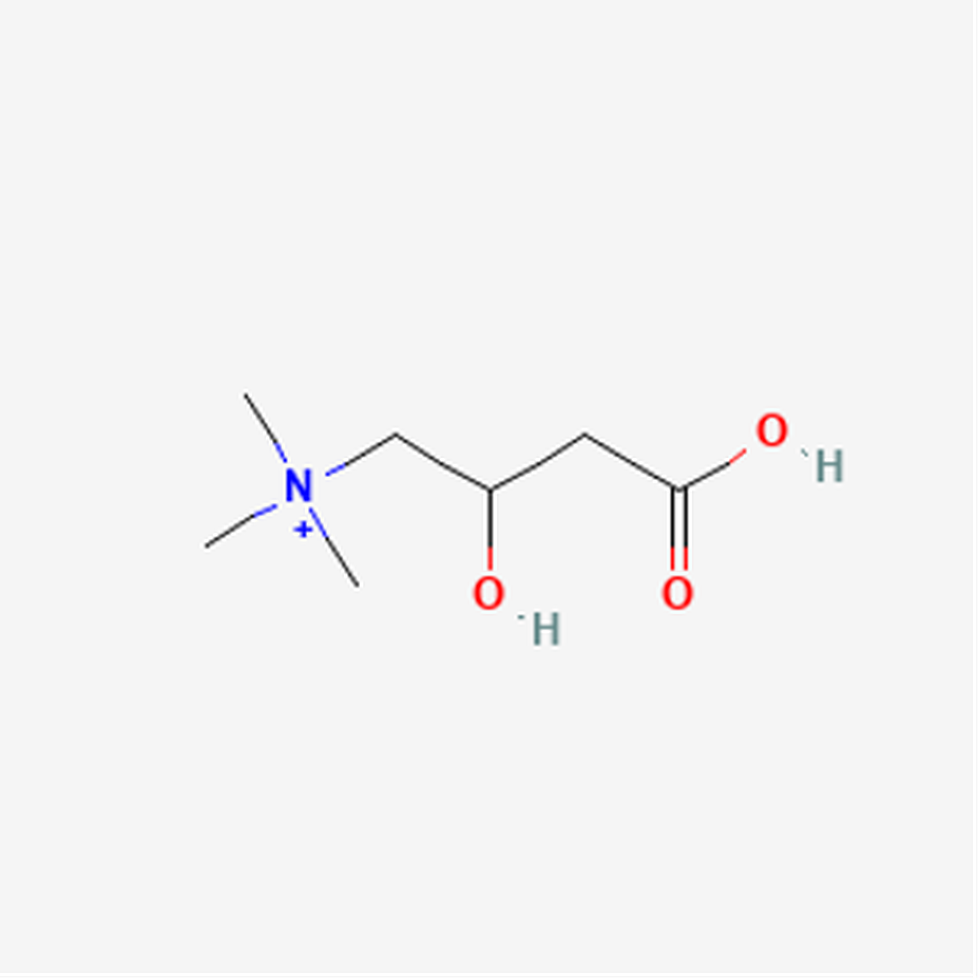
About Carnitine:
- Carnitine, derived from an amino acid, is the generic term for several compounds, including L-carnitine, acetyl-L-carnitine, and propionyl-L-carnitine.
- It is naturally present in many foods—especially foods of animal origin—and is available as a dietary supplement.
- Human body produces it in the liver and kidneys and stores it in the skeletal muscles, heart and brain.
- About 95% of total body carnitine is stored in heart and skeletal muscle.
- Importance:
- It is a substance that helps the body turn fat into energy. It is an essential cofactor that helps transport long-chain fatty acids into the mitochondria so that they can be oxidized to produce energy in the form of adenosine triphosphate (ATP)
- It is important for heart and brain function, muscle movement, and many other body processes.
- It also helps transport some toxic compounds out of the mitochondria.
- It has been proposed as a treatment for many conditions because it acts as an antioxidant.
10. International Air Transport Association (IATA)

About International Air Transport Association (IATA):
- IATA is an international trade body founded in 1945 by a group of airlines.
- Currently, IATA represents some 300 airlines comprising 94% of the international scheduled air traffic.
- IATA members include the world’s leading passenger and cargo airlines.
- Headquarters: Montreal, Canada
- Mission: To represent, lead and serve the airline industry.
- IATA supports many areas of aviation activity and helps formulate industry policy on critical aviation issues, including environmental concerns.
What is International Civil Aviation Organisation (ICAO)?
- ICAO is an intergovernmental specialized agency associated with the United Nations (UN).
- It was established in 1947 bythe Convention on International Civil Aviation (1944) known as Chicago Convention.
- Headquarters: Montreal, Canada
- Functions:
- ICAO is dedicated to developing safe and efficient international air transportfor peaceful purposes and ensuring a reasonable opportunity for every state to operate international airlines.
- It sets standards and regulations necessary for aviation safety, security and facilitation, efficiency, and economic development of air transport as well as to improve the environmental performance of aviation.
- It also serves as a clearinghouse for cooperation and discussion on civil aviation issues among its 193 member states.
- It also promotes regional and international agreementsaimed at liberalizing aviation markets.
- It helps to establish legal standards to ensure that the growth of aviation does not compromise safety and encourages the development of other aspects of international aviation law.





























































































































































.png)
.png)
.png)
.png)
.png)


.png)
.png)
.png)





.png)
.png)






.png)
.png)
.png)
.png)
.png)
.png)
.png)
.png)
.png)

.png)







.png)
.png)


.png)
.png)
.png)


.png)

.png)
.png)





.jpg)

.png)
.png)


.png)

.png)
.png)
.png)

.jpg)

.jpg)


.png)

.png)
.png)
.png)
.png)
.png)
.png)
.png)
.png)
.png)
.png)




.png)

.png)





.png)
.png)
.png)
.png)
.png)
.png)
.png)
.png)
.png)
.png)
.jpg)
.jpg)

.png)
.png)
.png)
.png)
.png)
.png)
.png)
.png)
.png)
.png)
.png)
.png)
.png)
.png)
.png)
.png)
.png)
.png)
.png)
.png)
.png)
.png)



.png)
.png)

.jpg)
.jpg)


.jpg)
.jpg)
.jpg)
.jpg)
.jpg)

.jpg)





.jpg)
.jpg)
.jpg)
.jpg)
.jpg)

















.jpg)
.jpg)







.jpg)


















.jpg)
.jpg)






























































































.jpg)
.jpg)


























.jpg)

.jpg)










.jpg)








.jpg)




.jpg)










.jpg)


















.jpg)












































.jpg)














.jpg)
.jpg)
.jpg)





.jpg)

.jpg)
.jpg)





































































.jpg)


































.jpg)
.jpg)
















































.jpg)












.jpg)


.jpg)




.jpg)
.jpg)
.jpg)

.jpg)
.jpg)
.jpg)
.jpg)

.jpg)
.jpg)
.jpg)

.jpg)
.jpg)
.jpg)
.jpg)
.jpg)
.jpg)
.jpg)
.jpg)

.jpg)


.jpg)
.jpg)
.jpg)
.jpg)
.jpg)
.jpg)
.jpg)
.jpg)
.jpg)
.jpg)











.jpg)
.jpg)





.jpg)
.jpg)
.jpg)
























.jpg)
























.jpg)









.jpg)
.jpg)







.jpg)
.jpg)









































.jpg)
.jpg)
.jpg)
.jpg)
.jpg)

.jpg)
.jpg)
.jpg)
.jpg)
.jpg)


.jpg)
.jpg)
.jpg)
.jpg)
.jpg)

.jpg)
.jpg)
.jpg)
.jpg)
.jpg)
.jpg)
.jpg)
.jpg)
.jpg)
.jpg)
.png)

.png)
.png)

.png)
.png)
.png)
.png)


.jpg)
.jpg)

.jpg)
.jpg)
.jpg)

.png)
.png)
.png)
.png)
.png)
.png)
.png)

.png)
.png)
.png)
.png)
.png)
.png)
.png)
.png)
.png)
.png)





































































-min.png)



.png)




.png)








































